Ray Turner Completes Last Tour of Lab Duty at JGI
For the last 15 years, Ray Turner has been one constant for the Joint Genome Institute. His vigilant stewardship as JGI’s Operations Deputy has come to a close. [Read More]
 For the last 15 years, Ray Turner has been one constant for the Joint Genome Institute. His vigilant stewardship as JGI’s Operations Deputy has come to a close. [Read More]
For the last 15 years, Ray Turner has been one constant for the Joint Genome Institute. His vigilant stewardship as JGI’s Operations Deputy has come to a close. [Read More] The Genome Insider podcast presents JGI-supported research on the “short plant,” Ceratodon purpureus or fire moss. Its genome could shed light on gene function in other plants, including bioenergy sources. Guests Stuart McDaniel and his then-graduate student Sarah Carey of the University of Florida were interviewed at the Plant & Animal Genome (PAG) Conference held in early 2020. [Read More]
The Genome Insider podcast presents JGI-supported research on the “short plant,” Ceratodon purpureus or fire moss. Its genome could shed light on gene function in other plants, including bioenergy sources. Guests Stuart McDaniel and his then-graduate student Sarah Carey of the University of Florida were interviewed at the Plant & Animal Genome (PAG) Conference held in early 2020. [Read More]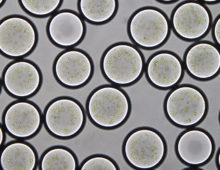 A team successfully combined synthetic biology and microfluidics to develop a platform that mimics chloroplast. [Read More]
A team successfully combined synthetic biology and microfluidics to develop a platform that mimics chloroplast. [Read More] The Genome Insider podcast presents JGI-supported research by Kelly Wrighton and her team at Colorado State University in Fort Collins. With more than a dozen principal investigators, the group has a massive undertaking: sequencing the world’s river microbiomes. JGI is a user facility of the Department of Energy (DOE) Office of Science and located at the Lawrence Berkeley National Laboratory in Berkeley, CA. [Read More]
The Genome Insider podcast presents JGI-supported research by Kelly Wrighton and her team at Colorado State University in Fort Collins. With more than a dozen principal investigators, the group has a massive undertaking: sequencing the world’s river microbiomes. JGI is a user facility of the Department of Energy (DOE) Office of Science and located at the Lawrence Berkeley National Laboratory in Berkeley, CA. [Read More] For JGI Earth Month, Karolina Heyduk, an evolutionary plant biologist at the University of Hawai’i at Mānoa shares how crassulacean acid metabolism, or CAM, helps plants take the heat. [Read More]
For JGI Earth Month, Karolina Heyduk, an evolutionary plant biologist at the University of Hawai’i at Mānoa shares how crassulacean acid metabolism, or CAM, helps plants take the heat. [Read More] For JGI Earth Month, graduate student Mo Kaze took on the challenge of explaining her research using the ten hundred most commonly used words in the English language. Her work focuses anthropogenic impacts on wetland microbiome composition and metabolism. The #TenHundredWords Challenge was inspired by Randall Munroe’s xkcd comic “Up Goer Five” and his subsequent book Thing Explainer. [Read More]
For JGI Earth Month, graduate student Mo Kaze took on the challenge of explaining her research using the ten hundred most commonly used words in the English language. Her work focuses anthropogenic impacts on wetland microbiome composition and metabolism. The #TenHundredWords Challenge was inspired by Randall Munroe’s xkcd comic “Up Goer Five” and his subsequent book Thing Explainer. [Read More]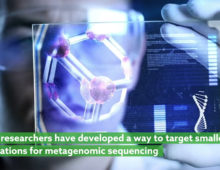 A team developed a pipeline to first target cells from uncultivated microbes, and then retrieve and characterize their genomes. [Read More]
A team developed a pipeline to first target cells from uncultivated microbes, and then retrieve and characterize their genomes. [Read More]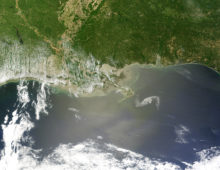 As part of JGI Earth Month, revisiting lessons in Nature’s resilience resulting from studies by Berkeley Lab researchers, including JGI scientists, to understand how the microbial communities in the waters responded to the influx of oil. [Read More]
As part of JGI Earth Month, revisiting lessons in Nature’s resilience resulting from studies by Berkeley Lab researchers, including JGI scientists, to understand how the microbial communities in the waters responded to the influx of oil. [Read More]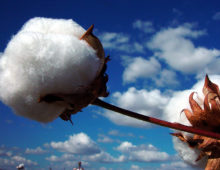 In Nature Genetics, a multi-institutional team has sequenced and assembled the genomes of the major cotton lineages. [Read More]
In Nature Genetics, a multi-institutional team has sequenced and assembled the genomes of the major cotton lineages. [Read More]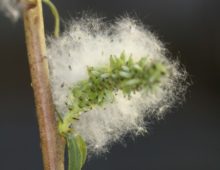 Understanding the mechanisms by which potential biofuel feedstocks reproduce can help guide breeding efforts. [Read More]
Understanding the mechanisms by which potential biofuel feedstocks reproduce can help guide breeding efforts. [Read More]